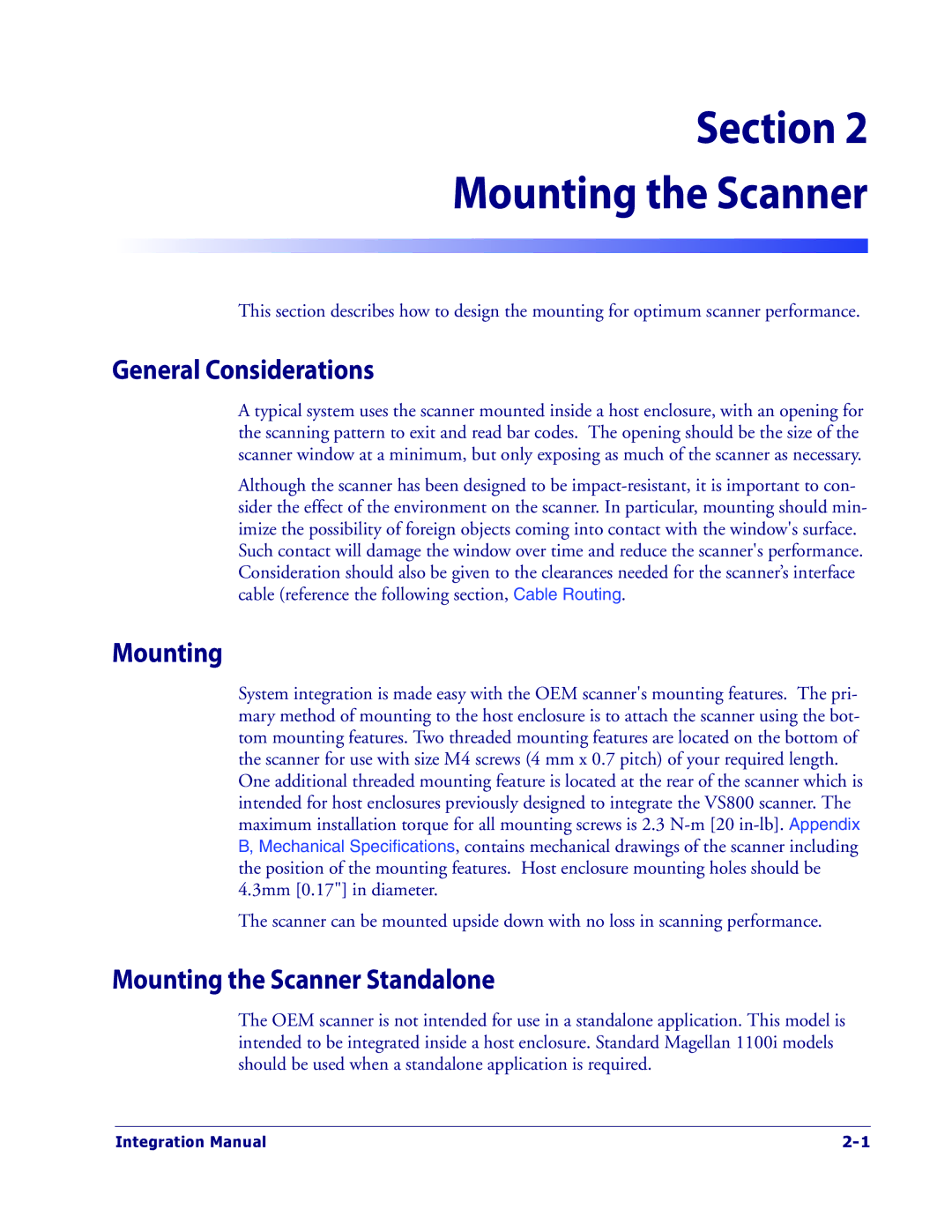
Section 2
Mounting the Scanner
This section describes how to design the mounting for optimum scanner performance.
General Considerations
A typical system uses the scanner mounted inside a host enclosure, with an opening for the scanning pattern to exit and read bar codes. The opening should be the size of the scanner window at a minimum, but only exposing as much of the scanner as necessary.
Although the scanner has been designed to be
Mounting
System integration is made easy with the OEM scanner's mounting features. The pri mary method of mounting to the host enclosure is to attach the scanner using the bot tom mounting features. Two threaded mounting features are located on the bottom of the scanner for use with size M4 screws (4 mm x 0.7 pitch) of your required length.
One additional threaded mounting feature is located at the rear of the scanner which is intended for host enclosures previously designed to integrate the VS800 scanner. The maximum installation torque for all mounting screws is 2.3
The scanner can be mounted upside down with no loss in scanning performance.
Mounting the Scanner Standalone
The OEM scanner is not intended for use in a standalone application. This model is intended to be integrated inside a host enclosure. Standard Magellan 1100i models should be used when a standalone application is required.
Integration Manual |
